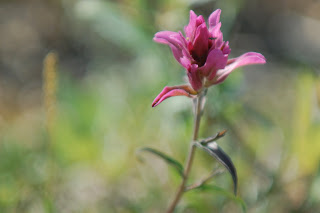Today, I enjoyed the taste of chocolate ice cream with raspberries. A delicious combination that was unexpected and extremely satisfying. I haven't had ice cream since I left the south, and the Northern, the only grocery up here, doesn't sell berries, so I haven't had that either. The ice cream was courtesy of Krista and the berries of Matt, so I thank the two of you so much. I don't know how you intuitively knew that I was craving chocolate ice cream!
But thinking about food, especially about the food I can't have access to up north, I started wondering about the food I do have access to. I can't actually make my own food up here beyond trying some crazy combinations with the toast, apples, bananas, oranges, honey, teas, and cereals that are left out at all hours - I have gotten pretty good at making a cinnamon apple toast crunch! So I am at the mercy of whatever Rob decides to cook up. This is where being a vegetarian gets a bit tricky.
I am a vegetarian, a moral choice I made for several reasons that many vegetarians share - health reasons, animal cruelty in the factory farm industry, environmental reasons. It is easy in the south to make choices that are much better for all of these areas - eating locally grown food, fresh food that I make myself. Easy. But the choices are much harder up here.
To truly eat local in Churchill, I would have to eat off the land, mainly eat wild game. The option seems logically reasonable. Eating wild food is healthier. It creates a direct connection between what you eat and the animal that you had to kill to eat it, which is a much deeper connection to food that I could ever have, even growing my own vegetables couldn't compare to taking the life of a goose or a caribou for food. This concept is largely related to the 100 mile diet, eat what is available to you within 100 miles.
So here is the problem with that philosophy. I am staying at a place where food is being prepared for me from plants that have traveled at least from Winnipeg and probably further, especially the bananas and oranges, to get all the way up to Churchill. The environmental impact is huge just from the travel of the food I am eating. The chef also prepares more food than everyone can finish during a meal. Some of it is reused, and he is pretty good at this, but a lot still gets thrown out. So if I already accept that I'm eating plants that are traveling from so far away, what would be the difference if I ate the meat that is already prepared and will be thrown out? Every other reason for being a vegetarian up here has already been compromised. There is still the carbon footprint of the meat itself and the amount of food that the animals have to be fed to make that meat, so maybe the veggies still have the upper hand.
I'm somewhat unique among vegetarians because I don't crave meat. The scent of chicken makes me sick, the scent of bacon doesn't make my mouth water, but makes me want something green. So I'm not tempted to eat meat. The thought of meat itself makes me sick. When I think of it, I don't think about it as food. I think of it as a dissection.
I'm wondering how right my choice is to eat what I'm eating up here anyway. If I would really follow the philosphy I proposed, I would still find a way to cook my own food and still only eat local foods - which wouldn't mean being a vegetarian.
Yet, if I am so strict about what I eat, am I going to miss out on the enjoyment of eating itself? When there are people starving in this world, shouldn't I be happy that I get food at all?
I'll end that thought there and add here, at the bottom of the post, an update on my experiment. It's done! Emma helped me empty the pool. After safely getting all the containers back into the lab and filtered with Jessica and Emma's help, Emma and I tilted the pool onto its side so the water easily flowed out. But remember that we were on the roof? The flowing water fell down the side of the roof onto the lower tin one, making an avalanche of lake water rain down onto the lab below. It was a pretty cool sight with the wind blowing the mist back up at us as the water fall crashed, holding a pink blowup pool on top of a roof in Churchill.








































